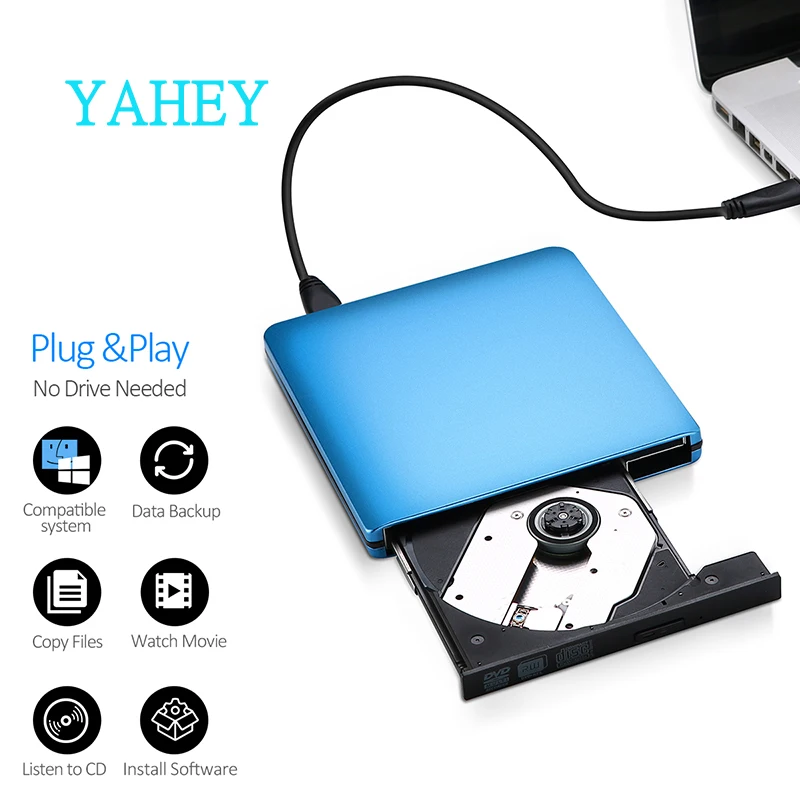Codecs for mac quicktime avi codec. It has a basic interface with readable options that are easy to comprehend. Though it comes with a cost, it offers more features than other free online tools so your money will be worth its price.
These advanced steps are primarily for system administrators and others who are familiar with the command line. You don't need a bootable installer to upgrade macOS or reinstall macOS, but it can be useful when you want to install on multiple computers without downloading the installer each time.
Download macOS
Find the appropriate download link in the upgrade instructions for each macOS version:


Watch DVD movies on your Mac. Play DVDs using your built-in DVD drive or an external DVD drive, such as a SuperDrive. How to watch a DVD movie. Preview your own movies. You can use DVD Player to watch movies you created with another app, like Final Cut Pro. External DVD Drive, Amicool USB 3.0 Type-C CD DVD +/-RW Optical Drive USB C Burner Slim CD/DVD ROM Rewriter Writer Reader Portable for PC Laptop Desktop MacBook Mac Windows 7/8.1/10 Linux OS Apple 4.4 out of 5 stars 3,621. External DVD Drive, Amicool USB 3.0 Type-C CD DVD +/-RW Optical Drive USB C Burner Slim CD/DVD ROM Rewriter Writer Reader Portable for PC Laptop Desktop MacBook Mac Windows 7/8.1/10 Linux OS Apple 4.4 out of 5 stars 3,621. Jun 28, 2020 So this is the list of the Best Bootable USB software for Windows/Mac 2020 with which you can create a bootable USB drive. If this concept is new to you, Etcher seems to be a good option. On the other hand, if you deal only with Windows, you can go for Rufus or Windows USB/DVD tool. Download and install the best free apps for CD & DVD Drivers on Windows, Mac, iOS, and Android from CNET Download.com, your trusted source for the top software picks.
macOS Catalina, macOS Mojave, ormacOS High Sierra
Installers for each of these macOS versions download directly to your Applications folder as an app named Install macOS Catalina, Install macOS Mojave, or Install macOS High Sierra. If the installer opens after downloading, quit it without continuing installation. Important: To get the correct installer, download from a Mac that is using macOS Sierra 10.12.5 or later, or El Capitan 10.11.6. Enterprise administrators, please download from Apple, not a locally hosted software-update server.
OS X El Capitan
El Capitan downloads as a disk image. On a Mac that is compatible with El Capitan, open the disk image and run the installer within, named InstallMacOSX.pkg. It installs an app named Install OS X El Capitan into your Applications folder. You will create the bootable installer from this app, not from the disk image or .pkg installer.

Use the 'createinstallmedia' command in Terminal
- Connect the USB flash drive or other volume that you're using for the bootable installer. Make sure that it has at least 12GB of available storage and is formatted as Mac OS Extended.
- Open Terminal, which is in the Utilities folder of your Applications folder.
- Type or paste one of the following commands in Terminal. These assume that the installer is still in your Applications folder, and MyVolume is the name of the USB flash drive or other volume you're using. If it has a different name, replace
MyVolumein these commands with the name of your volume.
Catalina:*
Mojave:*
High Sierra:*
El Capitan: - Press Return after typing the command.
- When prompted, type your administrator password and press Return again. Terminal doesn't show any characters as you type your password.
- When prompted, type
Yto confirm that you want to erase the volume, then press Return. Terminal shows the progress as the bootable installer is created. - When Terminal says that it's done, the volume will have the same name as the installer you downloaded, such as Install macOS Catalina. You can now quit Terminal and eject the volume.
* If your Mac is using macOS Sierra or earlier, include the --applicationpath argument, similar to the way this argument is used in the command for El Capitan.
Use the bootable installer
After creating the bootable installer, follow these steps to use it:
- Plug the bootable installer into a compatible Mac.
- Use Startup Manager or Startup Disk preferences to select the bootable installer as the startup disk, then start up from it. Your Mac will start up to macOS Recovery.
Learn about selecting a startup disk, including what to do if your Mac doesn't start up from it. - Choose your language, if prompted.
- A bootable installer doesn't download macOS from the Internet, but it does require the Internet to get information specific to your Mac model, such as firmware updates. If you need to connect to a Wi-Fi network, use the Wi-Fi menu in the menu bar.
- Select Install macOS (or Install OS X) from the Utilities window, then click Continue and follow the onscreen instructions.
Learn more
For more information about the createinstallmedia command and the arguments that you can use with it, make sure that the macOS installer is in your Applications folder, then enter this path in Terminal:
Catalina:
Mojave:
Victoria 2 for mac torrent. High Sierra:
Usb Dvd For Mac Os
El Capitan:
